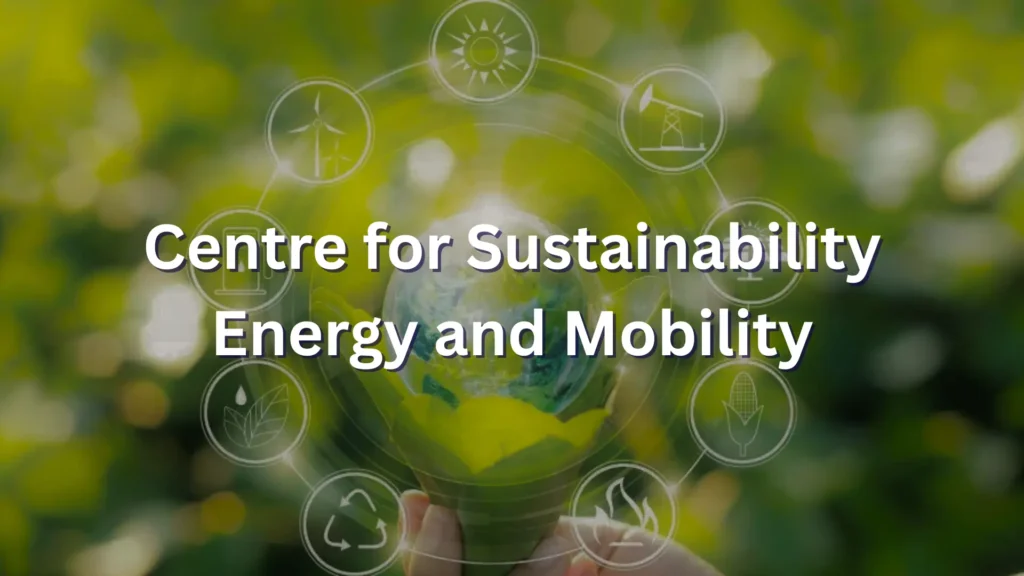Centre for Sustainable Energy & Mobility
The transportation sector is the second major contributor to the energy sector’s CO₂ emissions and environmental concerns, and is heavily dependent on imported oil, leading to an annual import burden of approximately $158 billion, impacting both economic stability and energy security. Globally, energy and mobility are undergoing an unprecedented transformation. The shift in the energy sector is being driven by two fundamental changes:
(i) Transition from fossil fuel-based energy generation to renewable sources, complemented by wider adoption of energy storage solutions, and
(ii) Development of a decentralised, smart, and resilient grid in the electricity sector.

Likewise, in mobility, transition towards sustainability is primarily driven by the deployment of cleaner fuels; while electrification remains a key sustainable alternative for road transport and railways, the shipping and aviation sectors are exploring hydrogen, ammonia and biofuels as an alternate fuel source. Sustainable urban mobility also needs compatible urban design, connected mobility options, and shift from private to shared mobility. The overall future of mobility is expected to be connected, autonomous, shared, and involving use of renewable energy resources.
Transformation Themes and Solutions
There are several solution alternatives that need to be adopted for successfully completing the above-mentioned transition. These solution alternatives will evolve further from technology innovation, urban planning, digital transformation, and data analytics. They will also come by creating different business models to attract private enterprises and by designing the right policy framework to be adopted by government agencies and ULBs. Such solution alternatives need to be objectively compared and evaluated based on their life cycle greenhouse gas (GHG) emissions and commercial viability. Social impact, technical maturity, and availability of underlying resources are other key considerations to compare different alternative pathways. Suitability of solution alternatives also depends on biogeography of the deployment and due care needs to be taken to adapt these solutions to the prevailing environment. Apart from identifying the most appropriate solutions for sustainable energy and mobility, such solutions also need to be implemented rapidly and at scale. Such faster adoption and scale-up is possible through the STEP Framework, as defined by Dr. Raghunath Mashelkar and Dr. Ravi Pandit in their book Leapfrogging to Pole-vaulting: Creating the Magic of Radical and Sustainable Transformation, where Social, Technological, Economic and Policy (STEP) lenses are used to identify, implement, and scale any radical transformation.What we do at C-SEM
The mission of the Centre for Sustainable Energy and Mobility (C-SEM) is to enable faster transition to sustainable energy and mobility solutions by facilitating the deployment of specific bio-geographic solutions at scale. We do this by applying our multidisciplinary knowledge of technology, engineering, and economics. The following are the values which form the basis of our shared ideals and bind us together:- Integrated/Holistic approach
- Innovation
- Pragmatism
- Courage
- Complement and Collaborate
- Transparent, just, and fair
Read more
